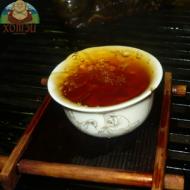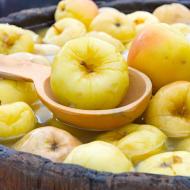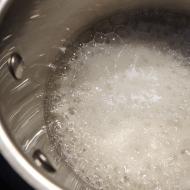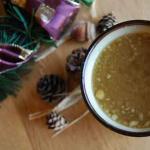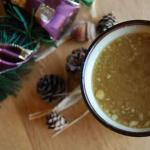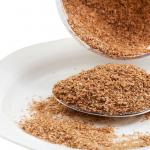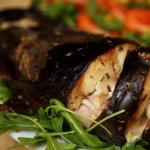
What products are made from milk? How to prepare fermented milk products at home? How to make homemade condensed milk
There is no point in listing all the beneficial properties of milk, because they have long been known. It’s not for nothing that we are taught milk porridge from childhood, and grandmothers in the village treat us to a glass of fresh milk with homemade cookies or gingerbread. This drink is always associated with kindness, care and benefit. But it is used not only for drinking, but also for eating. Let's see what you can make from milk at home.
Simplicity is the key to health
Products such as cottage cheese, sour cream, kefir, fermented baked milk, cheese and many others consist primarily of milk. If you think about it, practically nothing else is needed to make them, except for a couple of small additives. Moreover, they are all very similar in composition, but differ in consistency and taste. It's all about the method, or rather, the very process of their preparation. To obtain some dairy products, special equipment is required (for example, a sour cream separator). What can be made from milk without any equipment? Quite a lot.
Cottage cheese is our friend
We will look at the most common and especially popular products: cottage cheese, yogurt, cheese and... condensed milk! Let's start with the first one. First you need to boil the milk and then cool it to a temperature close to our body temperature (36-37 degrees). Add sour cream or kefir (3 tablespoons per 3 liters) to a saucepan with milk and cover it with a lid. So it should stand for a day at room temperature. The next day, put our pan with milk in another, with During this, the whey will separate and a milk curd will form. That's what we need. We hang it in gauze so that the excess liquid drips off and we are left with a tender crumbly curd. Easy, isn't it?

Yogurt without additives and without extra costs
Now we will tell you what can be done from milk for a healthy diet. We are talking about yogurt. You can prepare it in two ways: using sourdough or regular yogurt. First, boil the milk and cool it. Then add the starter to the pan (2-3 spoons per liter of milk) or (3-4 spoons per liter). Take a heating pad and pour hot water into it. Pour the milk with additives into a saucepan with a thick bottom and place on a heating pad. You can pamper yourself in the morning
Anyone who doesn't like cheese hasn't tried cooking it.
How about making homemade cheese from milk? We will make "Ricotta" - unusually delicate in taste and consistency. To do this, heat two liters of milk to 80 degrees, add sugar (a teaspoon), a pinch of salt and 30 grams of lemon juice. After removing from the heat, stir the milk constantly: it should curdle from the lemon juice, and the cheese should separate. Transfer it to a sieve and stir for some more time. Then you need to cover our homemade “Ricotta” with gauze and leave for half an hour. This is how simple and inexpensive you can get incredibly tasty

Homemade condensed milk is something new
Let's not forget about dessert, which also belongs to the list of things that can be made from milk. Of course, this is my favorite condensed milk since childhood. To make it, first cook the syrup from sugar and water (2:1). Then boil the milk and pour sugar syrup into it. Boil for another 20 minutes, remembering to stir, and then reduce the heat to low and cook for 2 hours. It’s not scary to let children enjoy this homemade tea with tea, because it contains absolutely no harmful additives in the form of flavorings, preservatives and others.
Cow, goat... who cares!
By the way, the article is about any milk. So, you can prepare the listed products from They will have a special, refined taste, and in terms of healthiness they will even surpass those made from cow’s milk. You will especially like it. You can cook it the same way as “Ricotta”. In Europe, it is included in the list of products that are a panacea for diseases. Try it, it certainly won't do any harm.
We have known about the benefits of fermented milk products for a long time. But very rarely do we think about their benefits... and yet many of the finished products contain preservatives, dyes and other taste improvers.
We all understand that the healthiest and highest quality products are those prepared at home. Unlike the ones we buy in stores, they didn't have to wait their turn to go into the refrigerator. Homemade products contain more lactic acid and bifidobacteria and do not contain artificial additives at all, which is an undeniable advantage. To prepare a fermented milk drink at home, you need to know 3 important rules.
Firstly, you must use perfectly clean dishes (if necessary, sterilize/wipe with alcohol)
Secondly, in no case should you allow the starter or milk mixture to heat above 50 degrees, otherwise all the beneficial bacteria will die.
Thirdly, the consistency of the final product depends primarily on the ripening time. The thicker you want to achieve, the longer you will have to wait for the product to be ready.
Cooking recipes
(it is necessary to follow the main three rules described above)
Cottage cheese
Pour a liter of milk into a saucepan and add one spoon of low-fat sour cream. Mix carefully and leave in a dark place for a day. Heat the sour milk in a water bath over low heat for ten to fifteen minutes. Remove from heat and cool to room temperature. Cover the bottom of a sieve or colander with gauze cloth and spread the resulting mass. All that remains in the gauze is our wonderful homemade cottage cheese. Tie the corners of the fabric and hang them so that the liquid drains completely. Homemade cottage cheese can be stored at low temperatures (-18 degrees) for up to six months.
The second method for preparing cottage cheese. Drain some of the whey from the container with the yogurt. Pour the remaining curd into a linen bag shaped like a cone. Hang the bag of curdled milk over the dish for 5-6 hours. Then place the bag with the resulting curd under a press on an inclined board. After 5 - 8 hours you will get tender homemade cottage cheese.
The third way to make homemade cottage cheese. Take the fattest milk you can find on the market, add cream and yogurt with live bacterial cultures (usually listed on the label). Mix everything and leave in a warm place for 12-24 hours (you can also add a crust of black bread). When the curdled milk is ready, pour it into a saucepan and heat over very low heat. As soon as flakes appear on the surface, set the pan aside for another 12 hours (if you are in a hurry, just wait until it cools completely). Then use a slotted spoon to remove the dense top layer and wrap it in gauze, allowing excess liquid to drain.
ADVICE! The remaining buttermilk (the liquid fraction of milk) is very good for making pancakes, kneading face masks or rinsing your hair.
IMPORTANT: to prepare cottage cheese, you should never use milk that has been in the refrigerator for a long time and has turned sour “from old age.” It is full of harmful microorganisms that will significantly reduce the usefulness of our cottage cheese.
Kefir
The easiest way to make kefir at home is to use a commercial kefir additive. First, the starter is made - add one tablespoon of kefir to a glass of milk at room temperature. To stir thoroughly. Boil milk in a saucepan and leave for a couple of hours. Then add six tablespoons of starter per liter of cooled milk, mix and place the pan in a dark and warm place. In a day our kefir is ready.
Yogurt
The process of making yogurt at home is somewhat more difficult than kefir and cottage cheese. After all, we do not use emulsifiers, stabilizers or similar additives used in industrial production. It is best to use a special yogurt maker. But if there is none, then the next recipe is just for you.
For the first time, you will have to buy good natural yogurt in the store. It should not contain various fruit and other impurities. Heat the milk to 40-45 degrees. Temperature is very important for our recipe, so stock up on a thermometer. Add store-bought yogurt to warm milk at the rate of two spoons per liter of milk. Pour the resulting liquid into a thermos and leave for 6-7 hours. Depending on the heat, your product may cook faster, so check the contents periodically. If the milk has turned into a dense mass with some liquid on top, then the yogurt is ready. Now it’s better to put it in the refrigerator and keep it there for a day.
Baked milk
Fresh milk is poured into a thick-walled container, covered with a lid and simmered in the oven for 3-4 hours at a temperature of 90 - 95C. You can prepare baked milk in a pressure cooker. To do this, fill the pan 2/3 with milk and place it on the stove. When steam begins to escape from under the valve, the fire is sharply reduced. After 1.5 - 2 hours the milk becomes creamy, and after three hours it turns light brown.
Cream
The main method of obtaining cream is separation. If there is no separator, you can use the old peasant method - settling the cream, but slightly modified, adapted to modern conditions.
The milk is left to stand in 3-liter glass jars in the cold until the boundary between the cream and skim milk is clearly defined. After this, a thin rubber tube about 1 m long with a hole diameter of 3 - 6 mm is lowered to the bottom of the container, securing it with a clothespin to the edge of the jar. The other end of the tube (after having sucked out a little milk) is lowered into a bowl on the floor. After 3-4 minutes, the skim milk is poured out, but the cream remains at the bottom - the “separation” is over.
Curdled milk
Curdled milk is made from pasteurized milk. Curdled milk forms itself by simply souring milk in a warm place. It takes two days for the yogurt to fully form. To speed up ripening, you can add three tablespoons of sour cream or sour milk or a piece of black bread per liter of milk to the milk. Fermentation of curdled milk at the optimal temperature lasts 3 - 6 hours and ends when an even clot is formed. To improve the taste, fermented milk is cooled at a temperature of 8 - 100 C for 6 - 8 hours.
Varenets
Varenets is curdled milk made from baked milk. Varenets will turn out especially tasty if you top the baked milk with cream at the rate of 0.5 - 1.0 glass of cream for every liter of milk. Otherwise, the technology for preparing Varents is similar to preparing yogurt.
Kaymak
Kaymak is thick melted foam that is skimmed from the surface of milk or cream. The foams are removed like pancakes and stacked one on top of the other in a separate bowl. Such foams are used in “Guryev porridge” for layering. These foamy pancakes can be stored for several days; over time, they turn into kajmak sour cream, which is especially tasty if you add honey to it.
The easiest way to get kaymak is to heat the cream over low heat. Cream must be continuously poured into a wide saucepan no thicker than 3 - 5 cm so that the foam forms continuously.
Sour cream
Just like cream, sour cream can have different fat contents. It is prepared from fresh or pasteurized cream at a temperature of 18 - 200 C by spontaneous ripening or adding starter (two tablespoons per liter). For the first three hours, the cream is stirred from time to time. As a rule, ripening occurs in 15 - 20 hours. Then the sour cream is transferred to the cold (3 - 50 C) for about a day. During this time, it acquires a specific aroma and thick consistency.
Fermented milk products, such as Mechnikovskaya yogurt, Varenets, fermented baked milk, acidophilus, sour cream and cottage cheese, are healthy dietary products prepared by fermenting whole milk. At home, you can prepare such fermented milk products using special starters purchased at the pharmacy or using existing fermented milk products as a starter, using the same method as in production.
Sour milk has a good effect on digestion, prevents the development of putrefactive processes in the intestines, which complicates digestion and leads to long digestion of food and increased gas formation.
Ready-made starters are pure cultures of lactic acid bacteria and usually come in dry form. In this state, their effect is weakened, but they can be revived with warm milk, pasteurized and cooled to a temperature of 40 degrees. The starter, prepared according to the instructions, is used to ferment milk, and part of the starter is left in the refrigerator for later use; its shelf life is up to two weeks.
If it is not possible to purchase ready-made dry starter, you can use fermented milk products.
How to prepare Mechnikov sour milk
Pasteurize fresh milk by heating it to a boil, but do not boil it, and cool it by placing it in cold water up to 45 degrees. Add a special liquid starter into warm milk and stir well. It is better to pour the fermented milk into small dishes into jars and lids, cover with lids and wrap in a warm towel. Fermentation will occur in 6-8 hours. The result will be yogurt, which must be placed in a cool place, then the yogurt will acquire a pleasant taste and aroma.
To prepare the next portions of curdled milk, you need to leave a little sour milk from this batch. Use as a starter.
How to prepare acidophilus.
At home, you can prepare acidophilus, which can be sweet or sour. Acidophilus is not just a tasty fermented milk product, but it is also used medicinally for certain diseases of the gastrointestinal tract, not only in humans, but also in poultry.
Pasteurize fresh milk and quickly cool, stirring to 40 degrees, pour in a special fermentation starter made from pure cultures of lactic acid streptococci, and stir the acidophilus bacillus for uniform distribution in the milk. Pour into jars or leave in an enamel pan, be sure to cover with a lid.
Acidophilus curdled milk has a viscous consistency and a normal sour taste. When consumed, you can add jam, sugar and fruit syrups to it. With additives, acidophilus becomes more tasty, but liquid and can be drunk from a glass, like milk.
To ferment milk, you should always cover it with a lid so that cooling occurs evenly, then both Mechnikov’s curdled milk and acidophilic curdled milk will have a smooth surface and a pleasant sour-milk taste.
How to make kefir at home.
To prepare kefir at home, you need to use kefir grains or pure cultures; the first time you can buy them at the pharmacy, then leave some of the fermented kefir for subsequent starters. You can also ferment milk with kefir from the retail chain.
Pasteurize the milk and cool it to 25-27 degrees, add the starter, the amount of which is 5% of the amount of milk. Stir the mixture well and pour into containers, close with lids and keep in a warm place at a temperature of 18 degrees. After 12-14 hours, the kefir is ready; a dense clot will form and can be stored in the refrigerator, where it can infuse for up to three days.
Useful properties of kefir.
If kefir is kept for 24 hours, you will get one-day kefir, two days - two-day kefir, and three days - three-day kefir. One-day kefir is used in medical nutrition, and it has a laxative effect on the intestines. Three-day kefir has a fixing effect.
Homemade fermented milk productsHome cooking
sweet and sour milk,
curdled milk, yogurt
and various types of cottage cheese
Sweet milk
Boiled milk
To prevent the milk from burning, rinse the pan with cold water first. Pour milk into the pan, put on the fire without a lid and bring to a boil. Do not leave unattended and watch carefully so that the milk does not escape.
Baked milk
Pour the milk into a clay jug or pot, cover with a lid and place in the oven over low heat.
The milk will be ready when it reduces in volume, becomes dark creamy, and acquires a specific taste.
THICK MILK (boiled)
(this is also a necessary component for making YOGHURT - see below)
Pour the milk into a thin aluminum pan, low and wide. In one and only one and the same one, all dairy products should be prepared and milk should be boiled, without using it for anything else.
Make a weak, barely noticeable fire and leave the milk on it for a long time, for three to four hours, without a lid (!), waiting for the moment when it decreases by about 1/3. After this, the milk acquires a different, even more pleasant taste and aroma.
Used as a stand-alone drink or for cooking Bulgarian yogurt(katyka). To prepare thicker greek yogurt the milk is boiled down by 2/5 or almost half.
Varenets Siberian
Season hot baked milk with thick fresh cream at the rate of 1/2-1 glass of cream per liter of milk.
Varenets can be served with tea or coffee.
Dairy products
Fermented milk products are necessary components of a complete healthy diet for children and adults.
Taking into account various violations during their modern industrial production, as well as the inevitable extremely undesirable additions of preservatives to increase shelf life, you should, if possible, prepare fermented milk products at home directly from milk, especially for children, pregnant and lactating women.
Unfortunately, at present, at least 70% of commercially available dairy products are adulterated and therefore unsuitable for a healthy diet.
It is almost impossible to distinguish a counterfeit dairy product from a benign one at home.
Remember that the shelf life in the refrigerator of any good-quality fermented milk product cannot exceed 2-3 days! And there are “yogurts” on sale with a shelf life of 6 months or more. For more information, see page (at the end of the page).
NOTE. Home fermentation of fermented milk products should only be carried out in complete darkness - carefully wrapped or in a dark closet.
Part 1
Fermented milk drinks
Fermented milk drinks include: curdled milk, kefir, acidophilus, as well as national fermented milk drinks ayran, kumiss, matsoni, yogurt and some others.
Fermented milk drinks are produced from milk of different fat content and skim, with or without the addition of fruit and berry fillers or other aromatic substances, sugar, by fermentation with pure cultures of lactic acid bacteria, followed by the destruction of the protein coagulum, which provides a liquid or semi-liquid consistency.
The types and combinations of lactic acid bacteria used in the starter determine the taste and consistency of the drink.
Many fermented milk drinks can be prepared at home.
SOLD VASH
Curdled milk is a fermented milk dietary product produced from whole or skim pasteurized, sterilized or baked cow's milk by fermenting it with a starter prepared with pure cultures of lactic acid bacteria.
Dairies produce ordinary, mechnikovsky, acidophilic, southern, Varenets, Ukrainian (ryazhenka) curdled milk. Based on fat content, yogurt is divided into fatty milk (usually 3.2% milk fat, and in Mechnikovskaya, Varenets and Ryazhenka up to 6%) and low-fat (no more than 0.05% milk fat). The curdled milk should have a strong and undisturbed curd.
Ordinary curdled milk made from whole or skim pasteurized milk, which is fermented with pure cultures of lactic acid streptococci.
Mechnikov sour milk made from pasteurized whole or high-fat milk; milk is fermented with pure cultures of lactic acid streptococci and Bulgarian bacillus.
Acidophilus curdled milk prepared from whole pasteurized milk, which is fermented with pure cultures of lactic acid streptococci with the addition of Bacillus acidophilus.
Southern curdled milk prepared from whole pasteurized milk, fermented with pure cultures of lactic acid streptococci and Bulgarian bacillus. Sometimes milk yeast is added.
Varenets- yogurt made from baked or sterilized milk with high fat content or low-fat milk, which is fermented with pure cultures of lactic acid streptococci. Sometimes a pure culture of lactic acid bacillus is added.
Ukrainian curdled milk (ryazhenka) prepared from baked milk with high fat content (6%) by fermentation pure cultures of lactic acid streptococci.
At dairies, flavoring or aromatic substances (sugar, honey, vanillin, cinnamon, fruit jams and preserves) can be added to curdled milk during packaging. The same products can be added at home to regular yogurt before using it.
Curdled milk is digested and absorbed much better than milk.
PREPARATION OF HOMEMADE SOCKED MOUCH
First way
Milk is pasteurized at +85°C without holding or boiled.
Then cool to +35-+40°C in cold water
Milk must be pasteurized and cooled in the same container.
The prepared milk is fermented, stirring well, with the previous yogurt at the rate of 0.5 cups per 1 liter. For fermentation, you can use store-bought sour cream.
After this, the milk is poured into jars and placed in a dark place at +35-+38°C.
The curdled milk will be ready in 6-10 hours.
Second way
Boil milk, cool to 30-35°C, add ready-made yogurt (2-3 teaspoons per glass of milk) or sour cream (0.5 tablespoons per glass of milk), stir everything well, pour into glasses, cover and leave for 18-20 hours in a warm place.
The shelf life of curdled milk is no more than 3 days at a temperature not exceeding 8°C.
In Russian cuisine, curdled milk is traditionally served with sugar and oven-dried crackers made from fresh rye bread.
Varenets
Ingredients
:
- 1.5 liters of milk,
- 1 tablespoon of sour cream.
Preparation
Pour the milk into 3 bottles and place in a large, not very deep clay bowl. Place the bowl in the oven.
When golden foam forms on the milk, lower it to the bottom with a spoon. Repeat this 4 times.
Then pour 1 glass of milk, cool, shake with a tablespoon of sour cream, mix with the rest of the milk.
Pour the milk into glasses, distributing the foam evenly, and keep in a warm place. To speed up souring, a crust of black bread is usually added to the milk. When it turns sour, put it in the refrigerator.
Serve with sugar and rye bread crumbs.
Varenets (ancient recipe)
Ingredients
:
- 1 liter of milk,
- 0.25 l cream,
- 1/2 cup sour cream,
- 1 yolk,
- 1 tbsp. spoon of sugar.
Preparation
Mix milk and cream in a saucepan and place in the oven. When foam appears, lower it to the bottom with a spoon and shake. Leave one foam on the plate. The milk should boil by one third.
Remove it from the oven and cool to the temperature of fresh milk. Add sour cream mixed with yolk and sugar, whisk, pour into cups and place a piece of foam on top.
Keep in a warm place (30-40°C) until it turns sour. Then put it in the refrigerator.
Serve with sugar, cinnamon and breadcrumbs.
Kaymak
Ingredients
:
- 3 glasses of cream,
- 1 cup of sugar,
- 1/4 sachet of vanilla sugar,
- juice of 1 lemon.
Preparation
Boil two glasses of cream, mixed with sugar and vanilla sugar, over low heat until tender (kaymak is ready if a drop dropped into cold water thickens to the consistency of sour cream).
When cooking kaymak, you need to be careful that it does not burn.
Remove the finished kaymak from the heat, cool (you can put it in a bowl with cold water), then beat with a spatula, while adding lemon juice drop by drop. When the kaymak is well ground, i.e. becomes thick and white, add the remaining glass of whipped cream. Mix the mixture well and put it in the refrigerator.
Kaymak is used mainly for layering waffles.
KEFIR
Kefir is a fermented milk dietary drink produced from pasteurized cow's milk by fermenting it with a starter prepared with kefir grains or specially selected pure cultures that cause lactic acid and alcohol fermentation.
Depending on the duration of ripening, kefir is distinguished weak(one day), average(two days and strong(three days).
The longer the ripening, the more alcohol (from 0.2 to 0.6%), lactic acid and carbon dioxide accumulates in kefir.
Dairy plants produce full fat kefir(3.2% milk fat), fatty with vitamin C And fruit kefir with fruit and berry syrups, containing 2.5% fat, and lean(no more than 0.05% milk fat).
Tallinn kefir differs from usual in the increased content of dry fat-free substances (at least 11% instead of 8%).
Kefir is digested and absorbed much better than milk. The alcohol and carbon dioxide contained in kefir, its sour taste and aroma stimulate the appetite, tone the nervous and cardiovascular systems, and suppress putrefactive processes that occur in the stomach and intestines.
Kefir is used in therapeutic nutrition. Strong kefir has a strengthening effect on the gastrointestinal tract, while weak kefir has a laxative effect.
Strong kefir is not recommended for people suffering from high acidity of gastric juice, gastric ulcers and duodenal ulcers.
The shelf life of kefir is no more than three days at a temperature not exceeding 8°C.
PREPARING HOMEMADE KEFIR
To prepare kefir, milk or skim milk is fermented with a starter of kefir grains or a portion of previously prepared kefir (or purchased in a store).
To prepare the starter, kefir grains (obtained from the previous portion) are washed with warm boiled water. Then, in a glass jar, they are poured with milk boiled and cooled to +18-+22°C (1/3 cup per 1 g of fungi).
When the milk has curdled (usually after a day), it is filtered through a sieve.
The fungi on the sieve are washed with warm boiled water and again filled with the same amount of milk.
Secondary curdled milk is kept for a day in the refrigerator or cellar, it is used as a starter for making kefir.
The kefir grains remaining after straining are washed with warm water, placed in a jar and used again to prepare the starter.
The milk is boiled and cooled to +20-+25°C, poured into a clean container and a starter of kefir grains is added - 2-3 teaspoons per glass of milk. After the formation of a clot, kefir is cooled to +8-+10°C and left at this temperature for maturation for 2-3 days.
As mentioned above, in the absence of previously prepared kefir grains, kefir at home can be prepared using kefir purchased in the store as a primary starter.
KEFIR IS VERY USEFUL FOR CHILDREN AND ADULTS. Regular consumption of fermented milk products improves metabolism, strengthens a weakened body, and increases appetite.
NOTE. Regular consumption of kefir simultaneously increases the effectiveness of most anti-cancer drugs and significantly reduces their effects.
ACIDOPHILINE
Acidophilus is a fermented milk dietary product prepared from pasteurized whole or skim cow's milk by fermenting it with a starter culture of pure cultures of lactic acid streptococci and acidophilus bacillus, as well as kefir grains.
Dairies produce acidophilus fatty(milk fat 3.2%) and lean(milk fat no more than 0.05%), fatty sweet And low-fat sweet. Acidophilus is digested and absorbed much better than milk. Acidophilus is used in medical nutrition, because the lactic acid bacteria contained in acidophilus suppress putrefactive processes that occur in the intestines.
The shelf life of acidophilus is no more than 3 days at a temperature not exceeding 8°C.
PREPARATION OF ACIDOPHILINE AT HOME
To prepare acidophilus, milk or skim milk is pasteurized at a temperature of 90-95°C for 30 minutes, cooled to +40°C, add culture of acidophilus bacillus(you can add a portion of store-bought acidophilus), mix and leave for 10 hours.
To prepare a secondary starter, a primary starter is added to the milk intended for fermentation at the rate of 50 ml per 1 liter and prepared in the same way as the primary starter.
After 5-6 hours, the secondary starter is ready. It is used to ferment subsequent portions of acidophilus.
Acidophilus is considered ready if a dense clot has formed.
In extreme cases, in the absence of a pure acidophilus culture or acidophilus, kefir can be used as a primary starter, then each time fermenting subsequent portions of milk with the resulting product.
WHEY DRINKS
Milk serum- a by-product of the production of cheese and cottage cheese. It contains about half of milk's nutrients - soluble protein, which makes up 20% of milk protein, all milk sugar, mineral salts, water-soluble vitamins. Therefore, it is recommended to widely use whey for human nutrition.
Whey is used in the production of baby food, bakery, pasta, confectionery products and whey drinks.
Whey drinks are produced by fermenting pasteurized whey with the addition of flavoring and aromatic fillers: kvass wort concentrate, sugar, yeast, salt, tomato juice, etc.
Depending on the added fillers, kvass “New”, “Milk”, acidophilus-yeast drink, drink with tomato juice, drink “Coolness”, drinks “Aromatic”, “Summer”, “Sunny”, etc. are produced.
KUMYS
Kumis is a fermented milk dietary drink prepared from the milk of mares or skim milk of farm animals of other species.
If kumiss is prepared from cow's milk, then a mixture of whole and skim milk, whey and sugar (2.5%) is pasteurized, cooled and then fermented with a special starter, which ensures mixed fermentation - lactic acid and alcoholic- and promotes the formation of antibiotic (including anti-tuberculosis) substances.
Ready-made koumiss is a fizzy drink of white color, strongly fermented milk, with an admixture of alcohol, taste and smell. There are different types of koumiss weak(one-day), containing up to 1% alcohol, average(two days) - up to 1.75% alcohol, strong(three-day) - up to 5% alcohol.
Kumis stimulates appetite and has dietary and medicinal properties; it has long been used for the prevention and treatment of pulmonary tuberculosis, as well as some diseases of the gastrointestinal tract. Kumis is also used for exhaustion after illness.
The nutrients of koumiss (proteins, fats, milk sugar) are absorbed almost completely (up to 95%). When consuming koumiss, the digestibility of proteins and fats contained in other foods increases sharply.
Strong kumiss is not used for medicinal purposes; they use it only as a refreshing or intoxicating drink (which is much healthier than drinking beer).
The shelf life of kumys is no more than 3 days at temperatures up to 8°C.
KAZAKH AIRAN
Ayran in Kazakh is a fermented milk drink common in Kazakhstan.
To prepare Kazakh ayran, you need to take from half to three quarters of a glass of starter per liter of milk. You can use yogurt, kefir or sour cream as a starter.
The milk should be brought to a boil, cooled to room temperature, the prepared starter should be added, stirred, poured into glass jars or ceramic cups and left to mature for five to six hours.
MATSONI
Matsoni is a fermented milk drink common in Transcaucasia.
To prepare matsoni, milk must be boiled, cooled to a temperature of 45°C, poured into glass jars of 0.2 or 0.5 liters, and added to each full teaspoon or tablespoon of starter - live yogurt (see below) or, in extreme cases, sour sour cream, mix well, wrap and place in a warm place for 6-8 hours.
Part 2
SOLD VASH
DIFFERENT TYPES OF COOK COOK
GUSTYANKA and RYAZENKA
BULGARIAN and GREEK YOGURT
SUZMA (yogurt cottage cheese) and AIRAN
Curdled milk as the basis for fermented milk products
The simplest fermented milk product is yogurt.
It forms itself, without any artificial help, by simply souring raw milk in a warm room. In this case To speed up souring, a crust of black bread is usually added to the milk.
That’s why people call it not only yogurt, but also cheese milk And self-brew. However, self-brew requires two days to fully form, otherwise it will be runny. Therefore, milk is sometimes helped to turn into curdled milk - a spoonful of sour cream is stirred into it and placed in a hot heated room (kitchen). No matter how simple yogurt is, it is the basis of most fermented milk products.
From its top, “verts”, they remove sour cream, and the bulk of it goes to cooking cottage cheese.
Cottage cheese
There is always a lot of whey in curdled milk, even two days old. Therefore, the first operation is to cast, to separate the whey from the clot. To do this, part of the whey is simply drained from a jar of yogurt, and then the remaining curd is poured into a special linen bag shaped like a cone.
Such a bag must be sewn and used constantly. This is more convenient than every time looking for a suitable random cloth (gauze, calico, linen) for making cottage cheese.
It is best to make a bag with a volume of 3-5 liters of milk, but no less.
After pouring the curdled milk into a bag, hang it over some dish and leave it for at least 5-6 hours, during which the whey will gradually come out of the curdled milk and curd will form. Only after this can you try to artificially squeeze out the hidden whey by placing a bag of cottage cheese under a press weighing 3-5 kilograms (between two boards or plywood).
In this way, after 5-8 hours you will get a tender homemade raw plastic cottage cheese. It will not crumble, but will break off in large, thick, beautiful layers.
But if you want to make the cottage cheese drier, then you should put the curdled milk in the bowl, before squeezing out the whey, in a water bath and heat it up. Then the serum itself will bounce off the clot.
In this case, you must be careful and do not overheat the curdled milk (!), otherwise the cottage cheese will become hard, fine-grained, and unpleasant in taste, because the sour milk will brew and coagulate.
If you heat the yogurt lightly, moderately, then when you squeeze out the whey you will get a wonderful dry, dense blade curd, which will look like a block in appearance.
Special types of cottage cheese:
skyr, irimshik, ezgey
Usually we use cottage cheese only from yogurt, that is, from raw fermented milk.
Meanwhile, in home cooking, it is advisable to use other types of cottage cheese, created by world culinary practice in the past and forgotten now.
All of them are easy to do, and most importantly, they provide a ready-made, usable product 20-40 times faster than ordinary Russian cottage cheese, and moreover, they do not require any fuss with expressing, squeezing, washing dishes and a blade bag.
Try them and they will quickly gain popularity among the adults and children in your family.
Skyr
You have a liter or three liter jar of milk placed in the evening: by the morning yogurt has formed, not yet quite strong for cottage cheese and at the same time quite sour. You can’t eat that much yogurt right now, and you don’t want to, but you need to have something hearty for breakfast. What to do?
Take a liter or two of fresh milk, quickly boil it in a large deep saucepan and at the very moment when the foamy head of boiling milk begins to rise to the edges of the pan, preparing to run away, pour in in one fell swoop exactly the same amount of curdled milk as boiling milk. The fire can be increased by 1-2 minutes, or you can leave it the same. Then continue boiling the mixture for no more than 2 minutes or less, depending on the amount of liquid.
As soon as the whey turns greenish-yellow, stop boiling and pour it off, trying to combine all other grains of curdled milk with the large milk curd. Place the resulting curd in a deep plate and lightly press with a spoon on all sides so that all the greenish-yellow whey is separated, but not the whitish liquid. As soon as a white, milk-like liquid begins to separate, stop pressing on the clot.
It turned out skyr - cottage cheese made from half sour and half sweet milk, not sour, pleasant, with a particularly elastic consistency, with a barely noticeable creamy, rather than the usual cottage cheese smell. It is ready for immediate use.
Irimshik and ezgey
If you change the ratio of curdled milk and fresh milk and instead of the 1:1 ratio take two liters of fresh milk and one liter of curdled milk, you will get cottage cheese with a different taste and consistency, called irimshik.
It can be boiled until the whey separates for a maximum of 5 minutes.
If you change the proportion in the opposite direction and take twice as much yogurt as fresh milk, that is, two liters of yogurt and one liter of milk, you get cottage cheese hedgehog, which cannot be boiled for more than one minute - in fact, at the same moment when the curdled milk is poured into hot milk, the whey will bounce off.
To both of these types of cottage cheese, you need to add half a teaspoon or one teaspoon of salt and 25-50 grams of butter, mixing them with the cottage cheese while it is still warm.
Irimshik and ezgey work out much better if they use not ordinary Russian curdled milk, but katyk (yogurt), which we will talk about below.
In addition to the combination of curdled milk and fresh milk, sour cream is used as a starter for one or another type of milk to formulate a whole range of fermented milk products.
Guslyanka (gustyanka)
If one liter thick milk(see at the beginning of the page) or simply into boiled and cooled to 30-35 ° C, pour a tablespoon of sour cream diluted in half a glass of the same milk (per liter of milk) and put in a warm place, tightly closing, then the resulting yogurt will wear Name "gustyanka", or "guslyanka", and differ in taste and thickness from ordinary cheese milk (yogurt).
It can be used in the future to create different cottage cheeses, thereby modifying their taste.
Ryazhenka or Ukrainian Varenets
If in baked milk(see above) pour one glass of sour cream per one liter of milk, you will get fermented baked milk, or Ukrainian Varenets, after fermenting for 3-4 hours.
Bulgarian and Greek yoghurts (katyki)
Suzma (yogurt curd)
If thick milk(boiled milk, sweet milk product - see above at the beginning of this page), cooled not lower than 30°C and not higher than 35°C, ferment with 100-150 grams of live yoghurt per liter of milk and at the same time carefully wrap the container with milk in cotton wool blanket, batting or quilt, left warm for 8-10 hours and protected from shaking and moving (!), you can prepare a very tasty YOGURT (or katyk), i.e. sour milk fermented with a culture of fermented Bulgarian bacillus.
It should be taken into account that the 30°C required for ripening yogurt will be maintained through the ripening process only in a large amount of milk (at least 2-3 liters) with careful wrapping. For fermentation of small quantities it is necessary yogurt maker- thermostat that maintains temperature.
When cooking thick milk for fermentation Bulgarian yogurt milk is boiled down by about 1/3 for thicker greek yogurt- by 2/5 or almost half. You can also use store-bought and boiled 6% milk.
Home breeding culture of fermented Bulgarian bacillus. When simply fermenting thick milk with sour cream, yogurt (katyk) will not be obtained immediately, not the next day, but only after similar re-fermentation of thick milk is done at least three or four more times, but not with sour cream, but with 100-150 grams the previous portion of katyk, and gradually it will be created Bulgarian stick culture, which in the future must be maintained continuously and every day a new katyk must be fermented with an old katyk. In the first two fermentations, you will get not katyk (yogurt), but “gustyanka” (see above) - a product closer to very tasty thick yogurt.
After a month or two of sequential repetition of such fermentations, it will be finally cultivated pure culture of Bulgarian bacillus, creating the real taste of katyk (yogurt) and forming its special valuable properties.
Self-prepared live yoghurts are very useful for children and adults, especially for dysbiosis, allergies and a tendency to frequent colds. The shelf life of live yogurt in the refrigerator is no more than 2 days after preparation, because The very beneficial healing substances produced by the Bulgarian stick gradually disappear with further peroxidation of the yogurt.
If possible, it is better to initially ferment thick milk not with sour cream, but with “live” yogurt purchased in a store - which has a shelf life indicated on the package of no more than 2-3 days (!), i.e. to which no toxic preservatives have been added that kill the Bulgarian bacillus - then yogurt will turn out right away.
From all other types of curdled milk katyk differs not only in taste, but also in the fact that it has very little whey. It is practically invisible, and it is detected only when expressing the katyk in a blade pouch.
After decanting the yogurt (katyk), you get not cottage cheese, as from ordinary yogurt, but SUZMA- a product that occupies a middle position between cottage cheese, sour cream and butter.
Suzma has all the good qualities of these three products and none of their negative qualities.
Its main advantage and miracle is its reversibility both “backward” - to the “pre-light” state, and “forward” - along the path of transformation into products of a higher order, with a higher concentration of fat and protein fractions. After two or three days, or even after a week of storage in the cold, you can dilute it and turn it into a kind of sour cream, milk, katyk, or, conversely, turn it into butter by starting to whip it, or make cottage cheese out of it by heating it over a fire in a water bath . But suzma itself, without additional dilution or heating, can simultaneously serve as sour cream, cottage cheese, and butter.
It can be put in borscht and cabbage soup, spread on bread and used in cheesecakes, cheesecakes, and curd pastes.
Ayran (drink made from suzma diluted with water)
Fruit yogurt
In summer, 100-200 grams of suzma, diluted in a liter or half a liter of cold boiled or mineral water, gives an excellent thirst-quenching and invigorating drink - ayran.
Thus, suzma is an excellent, healthy, tasty fermented milk product with a diverse, wide profile of use. That's why it can be highly recommended for home cooking and as a convenient ingredient in many home cooking dishes.
In trade practice the name is used "yogurt" to denote a specific Bulgarian sour milk (katyka), made from thick milk(see above). Strictly speaking, yogurt(in Bulgarian “yoghurt”) is the same katyk, but named in a different Turkic dialect (Turkish); some peoples of our country also call it Chekise, tarak.
However, gradually in European countries the name “yogurt” began to be understood only as katyk, which is prepared with vegetable (berry and fruit) additives.
Since old times in Tatarstan, very often they put a small piece of beet into the katyk during fermentation in order to tint it, give it a slightly pinkish tint, and make it beautiful. Many other peoples whose national cuisine includes katyk do the same.
Sometimes cherries, blueberries, currants and other berries with intense, highly coloring juice are used for tinting.
This technique, used in folk cuisine only for beauty, gave the food industry of a number of European countries the idea - Germany, Denmark, Sweden, Romania, Finland, etc. - to produce katyk with various additives of berry and fruit juices and purees, no longer for beauty, but for changes and additions to its taste to create a variety of vitamin-enriched products. This katyk with the addition of berries and fruits is now called “yogurt” in trade practice.
Fruit yoghurt is easy to make at home:
Just when fermenting thick milk to prepare katyk (see above), together with the starter (100-150 grams of old katyk per 1 liter of thick milk), you need to dilute 50 grams of any fruit or berry puree or put 4-5 berries per liter of fermented yogurt like this so that for each glass there is approximately one berry or one teaspoon of puree.
You can use apple, currant, strawberry, plum, cherry puree, tomato paste, raspberry and blackberry juice.
Drink, kids, you will be healthy! Do you remember a song you knew from childhood?Milk, and especially dairy products, are beneficial not only for children, but also for adults.
What is their use?
First of all, it is a source of protein, calcium, potassium, phosphorus, lactic acid, amino acids, vitamins A, D, B2. Moreover, the ratio of all these beneficial substances is optimal.
Deserves special attention dairy products. They contain lactic acid bacteria that are beneficial to the human body, necessary for normal intestinal function and strengthening the immune system.
Everything seems simple - use milk, kefir, cottage cheese, yogurts in your diet and your health will be what you need. But the problem is that nowadays it is difficult to find natural milk and dairy products that meet all the necessary qualities. We buy everything in supermarkets and often don’t even read the packaging (at best, we pay attention to the expiration date).
Often many things are simply hidden from consumers. Most modern manufacturers of dairy products use all kinds of additives and preservatives to extend shelf life, and the milk itself is often and thickly produced from dry powder.
To protect yourself and at the same time receive substances beneficial to our body, you need to try to find proven sources of dairy products, in particular milk, for yourself and your family.
Where can I find such a source? If you don’t have friends who can recommend sellers of homemade natural milk, you will have to search on your own through trial and error. Where can you buy milk? Of course, on the market, carefully looking at the sellers. Try to find someone who sells their cow's milk rather than repurchasing it. Pay attention to the neatness and how hygiene is maintained (for example, cottage cheese is not placed next to chicken eggs). When buying, take the seller’s mobile phone number and, if you like the milk, you will become a regular customer.
Having good homemade milk, you can always prepare homemade dairy products fresh and of excellent quality. And they will be cheaper in cost.
What dairy products can you prepare at home?
Here is a partial list of foods that are easy to prepare at home:
- Cottage cheese
- Yogurt
- Baked milk
- Ryazhenka
- Homemade condensed milk
- Homemade ice cream
- Deli ricotta cheese
How to make homemade cottage cheese?
Cottage cheese is not difficult to prepare at home, following technology and hygiene rules.
Two ways to make homemade cottage cheese:
Method 1:
Boil the milk and cool to 37 degrees. Add 2-3 tablespoons of fresh sour cream or kefir per 3 liters of milk. Stir with a clean wooden spoon, cover with a lid and leave at room temperature for about a day.
After 24 hours, pour water into a larger saucepan than with fermented milk and boil it. When the water boils, place our pan with milk in it and immediately turn off the heat. The water will cool and the whey will separate in the pan with the milk, forming a curd. It should be placed in a linen bag or on a large sieve to better strain out the remaining whey.
Method 2:
Milk is fermented naturally without fermentation. To do this, leave it in a sealed container at room temperature for a day. After a day, the milk will sour, and from sour milk we prepare cottage cheese in the same way as in the first case.
The resulting whey is good for making okroshka, pancakes, pies, or just drinking.
How to make homemade yogurt?
Yogurt is an excellent dietary product, a great breakfast or snack between meals.
Two recipes for making yogurt:
- Using sourdough.
Such starters are sold in supermarkets. They are dry and liquid.
We dilute the dry mixture directly in the bottle with a small amount of warm boiled water.
Add liquid starter to milk in an amount of 2-3 tablespoons (according to instructions)
Boil the milk, cool to a temperature of 37 degrees (if you don’t have a thermometer, drop it on your hand - the milk should be pleasantly warm). Add the prepared starter. Mix gently with a clean wooden spoon.
If you prepare homemade yogurt in a yogurt maker, you need to first scald and cool the jars, pour the milk with the starter into them, without closing the lids, place them in the yogurt maker and turn on the heat. In a yogurt maker, the cooking time is 4-6 hours.
You can do just fine without a yogurt maker by using a regular heating pad. Fill the heating pad with hot water at 70-80 degrees, wrap it in a small (baby) blanket. Pour the milk with the starter into a prepared scalded and cooled small saucepan with a thick bottom, cover with a lid and place on a heating pad. The yogurt will be ready before morning.
From already prepared yogurts within 5 days, you can prepare yogurt one more time, setting aside 3 tbsp. spoons per liter of milk.
2. Using regular yogurt(preferably without additives).
Of course, in terms of the number of beneficial bacteria and, accordingly, the usefulness of the product, it will be inferior to yogurt made from special starter cultures. But, having 1 liter of homemade milk and leftovers (3-4 tablespoons) of yogurt, you can easily make 1 liter of fresh yogurt in the morning.
Boil the milk, cool to 37 degrees, add yogurt, stir and cook in a yogurt maker or thick-bottomed pan on a heating pad with boiling water, wrapped in a blanket.
How to make baked milk at home?
If you like baked milk, prepare it yourself. It's very simple.
Pour the milk into a thick-bottomed pan, stirring, bring to a boil, skim off the foam. Then, reducing the heat to a minimum, continue to “simmer” it over the fire for 3-4 hours until it turns yellowish (the color of baked milk :)), stirring constantly and skimming off the foam from time to time.
How to make fermented baked milk?
Add 20% (or higher) sour cream to the prepared baked milk (300g per 1 liter of milk). Mix thoroughly. Heat, stirring until the temperature reaches 70 degrees, remove from heat, cover with a lid and leave until completely cooled at room temperature.
How to make homemade condensed milk?
Condensed milk is a favorite treat for both children and adults. It goes well with pancakes and pancakes, and is included in many culinary products. The harmful components in store-bought condensed milk have been discussed and discussed in all television programs talking about testing this product. But you can make condensed milk that tastes the same, but without harmful additives, at home.
For 1 liter of milk you need 1 cup of sugar and 0.5 cups of water.
We prepare sugar syrup from milk and water. Bring the milk to a boil, pour hot sugar syrup into it, bring to a boil over high heat and boil for 15-20 minutes, stirring. Afterwards, reduce the heat to low and cook our condensed milk for another 1.5-2 hours.
Homemade condensed milk ice cream.
If you boil homemade milk, cream will form on top when it cools. And from them and the same homemade condensed milk you can make homemade ice cream.
Beat any fresh or frozen berries in a mixer with condensed milk until pureed. Cool in the freezer. Whip the cream until creamy, add the cooled berry mixture and beat everything together again. Spread into molds in a thin layer and place in the freezer to freeze for 2 hours.
(for 1 cup condensed milk, 1 cup berries and ¾ cup cream)
Homemade sire ricotta.
Italian ricotta cheese has an unusually pleasant, delicate taste. He's very helpful. It contains a lot of calcium and vitamin A. It is a delicacy, is quite expensive and is included in many delicious dishes.
Ricotta cheese can be easily made at home. For cooking 250 gr. For this cheese you will need 2 liters of homemade milk, 1 teaspoon of sugar and 30 ml of lemon juice.
Heat the milk to 80 degrees (steam starts, but does not boil yet), add sugar, salt on the tip of a knife and lemon juice. Remove from heat. Stir gradually until the milk from the lemon juice curdles and separates from the whey. Using a spoon, carefully transfer the separated cheese to a fine sieve. Let it drain, gently stirring with a spoon all the time. When all the whey has drained, leave the cheese for another 30 minutes, covering the sieve with a towel.

